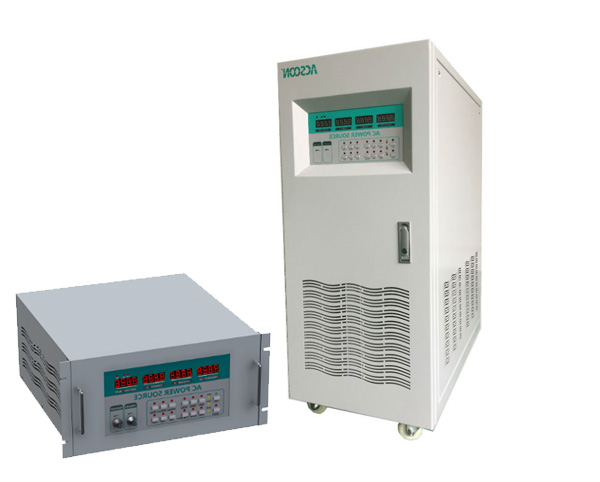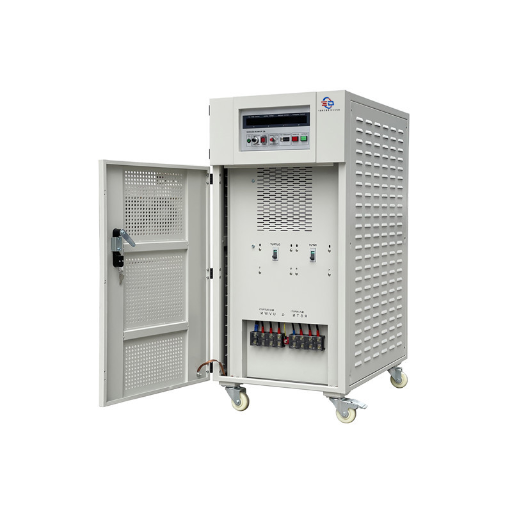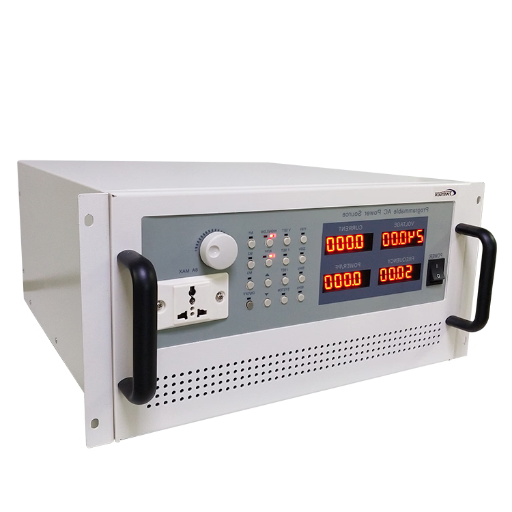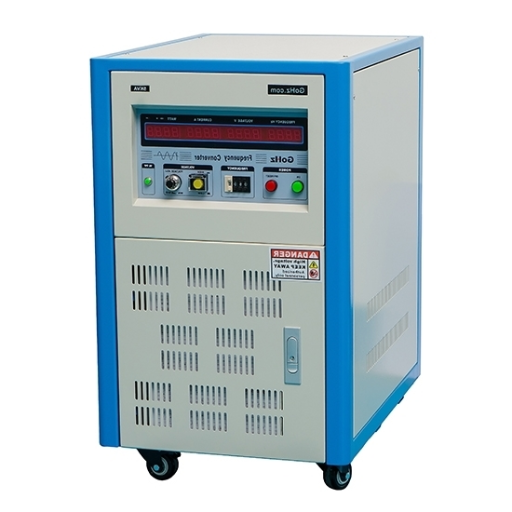Frequency converters for AC power are considered very significant in today’s electrical systems, particularly in the context of global disparity in power standards. In countries operating with 50Hz power, and others with 60Hz, an awareness of the functioning and necessity of these converters could greatly benefit an industry, business, or any individual. This article proceeds to identify the significance of AC power frequency converters, theirs working, their application, and the problems they counteract. Whether you are interested in operating equipment across multiple countries or seeking ways to enhance the efficiency of an existing system, this guide provides comprehensive information on these essential devices. Stay tuned to learn how frequency converters help convert power standards for various applications, opening up possibilities for many sectors to be considered.
Definition and Basic Functionality

Frequency converters are devices permitting the alteration of the frequency of electrical power to suit the requirements of special equipment or systems. It takes the incoming electrical power of a certain frequency and converts it into another frequency, allowing equipment to operate efficiently even with a differing supplied power standard. This makes frequency converters important for circumventing frequency differences between regions or for precision frequency-dependent applications. Their primary function is to establish compatibility and ensure the equipment’s safe operation in an electrical system of higher or lower frequency.
What Is a Frequency Converter?
A frequency converter is an electronic device that changes the frequency of an electrical power supply to suit the needs of specific equipment, allowing it to run efficiently and reliably in various systems.
Overview of AC Power Supply Role
An AC power supply plays the critical role of supplying energy to systems and devices by converting raw energy into electrical power. AC power is an efficient form of electricity capable of transmission over long distances and can work with any standard electrical system worldwide. The periodic cycle of voltage changes makes it ideal for accessing the power lines of houses, commercial buildings, and industrial establishments.
Modern advances in AC power supply technologies have increased energy efficiency and reliability. With developments in power transmission and conversion systems, global electricity grid losses are now limited to roughly 8% on average. AC power supplies, along with energy sources such as wind and solar, play a crucial role in procuring and distributing energy from these sources effectively.
The AC power supply typically operates at 50 or 60 Hz, depending on the local standard. The United States and Canada are two countries that run on 60 Hz while in Europe, it is mainly 50 Hz, with many Asian countries agreeing on the same. The voltage grades also vary among different countries: the United States uses 120V, whereas many others, including the United Kingdom, use 230V. This clearly illustrates the necessity for frequency converters and adaptive AC power supplies, particularly for businesses operating globally.
The AC power has become a big concern for the modern infrastructure with the advent of smart grids. Smart grid systems leverage cutting-edge sensors and IoT technologies to efficiently manage energy distribution, mitigate the impact of outages, and seamlessly integrate renewable energy resources. Global investments in smart grids surpassed $30 billion in 2022, a figure that is also being studied. The importance of the smart grid highlights the changes it creates in the consumer electricity supply paradigm.
Through the various permutations and combinations in the evolution of AC power supply, at the center is the core of energy consumption everywhere, and it remains so, with a changing scope to fit within the parameters of modern technology and sustainability.
Importance of Frequency Changers
The frequency changer plays a very significant role in modern electrical systems, enabling the efficient handling of power in various applications. These devices permit the alteration or change of frequency of AC without changing the voltage because voltage goes against the compatibility of one system versus another, or it serves least in optimization. The five significant advantages and usages of frequency changers are:
Industrial Machinery Control
Frequency changers enable variable speed control of motors, a crucial feature for industrial machinery that must operate at different speeds according to the task at hand, thereby saving energy and extending the equipment’s lifespan.
Renewable Energy Integration
These devices become important for interfacing renewable energy sources, such as wind and solar power, with the power grid, thereby ensuring the energy production frequency aligns with grid requirements for stable delivery.
Global Equipment Compatibility
They allow frequency changers to operate equipment designed for a power standard in one region (50Hz, for example) in regions that have a different standard (60 Hz, for example), thus being useful in international operations and products.
Commercial Aviation Instruments
Aircraft and vessels have distinct frequencies for their power supplies (often 400 Hz), requiring frequency changers for the electrical system to continue operating correctly and efficiently in those environments.
Test and Research Laboratories
Frequency converters find applications in research laboratories for simulating a variety of power conditions, enabling the testing and development of advanced technologies, electronic equipment, and systems in controlled environments.
This list of uses highlights how frequency changers enhance opportunities for energy efficiency, technological advancement, and the easy operation of global electrical systems.
Types of Frequency Converters

| Type | Key Points | Parameters |
|---|---|---|
| Voltage Source Inverter (VSI) | Robust, simple, general-purpose use | DC to variable AC voltage |
| Current Source Inverter (CSI) | High torque, dynamic braking | DC to variable AC current |
| Direct Torque Control (DTC) | Precise torque, fast response | No complex vector calculations |
| Matrix Converter | Compact, efficient, no DC stage | Direct AC-to-AC conversion |
| Upconverter | Low to high-frequency conversion | Input/Output frequency, phase noise |
| Downconverter | High to low-frequency conversion | Input/Output frequency, LO freq. |
| Up-Down Converter | Combines up and down conversion | Integrated dual functionality |
Static Frequency Converters
Static frequency converters are solid-state devices that utilize semiconductors to change electrical power frequency, without any moving parts involved. Aided by sophisticated electronics, these converters efficiently change AC power from one frequency to another, in order to fulfill specified industrial, aviation, and military applications.
The major advantage of static frequency converters is that it can be more than 95% efficient since there are no mechanical components that can wear out over time. Also, they offer an exact control of the output frequency, so they can be used with equipment such as radar systems, laboratory instruments, and medical devices.
Examples of aviation applications include SFCs delivering 400 Hz power for aircraft ground support. According to recent market data, it is expected that the global market for static frequency converters would grow at a CAGR of 4.8% between 2023 and 2028 due to increasing adoption on renewable energy systems and desire for energy-efficient solutions for data centers and industrial facilities.
Additionally, the newer types of SFCs offer several advanced features, including harmonic distortion reduction, lightweight design, and modular architecture. For instance, models implementing pulse-width modulation (PWM) technology deliver cleaner power outputs, which is essential in environments that demand conscious maintenance of power quality.
These developments underscore the crucial relevance of static frequency converters in addressing modern energy demand issues and in improving the efficiency of electrical systems worldwide.
Rotary Frequency Converters
Rotary frequency converters are electromechanical devices that convert power from one frequency to another through the action of a motor and a generator. These are well suited wherever high power capacity is required, along with durability. Their rugged construction ensures that the output power meets the requirements that demand high precision, such as industries of aerospace crafting, manufacturing, and telecommunications.
Following is the description and the main data about rotary frequency converters, followed by some eminent examples:
Features:
- High Power Capacity: Efficiently meets heavy power demands.
- Rugged Design: Designed for long service life, even under harsh conditions.
- Voltage and Frequency Flexibility: Outlets can be configured so that various operational requirements are met.
- Low Harmonics: Gives cleaner electricity with fewer harmonics distortion.
- Thermal Stability: Stays stable under extended operation and prevents overheating.
Examples of Rotary Frequency Converters:
RFC-3000 Series
- Output Power: Up to 3,000 kVA
- Frequency Range: Variable: 50 Hz-400 Hz
- Efficiency: 95%
PowerSync 500
- Output Power: 500 kW
- Frequency Range: 60 Hz to 400 Hz
- Application Use Case: Aerospace Testing Facilities
InduFreq 2000
- Output Power: 2,000 kVA
- Compatibility: Fits into various industrial systems
- Noise-Level: Low, below 65 dB
GenConv Pro 750
- Output Power: 750 kW
- Suitable For: Maritime and defense applications
- Certification: MIL-STD certification for military use
TransVolt 1200
- Output Power: 1,200 kVA
- Voltage Range: Variable 110-450 V
- Efficiency Rating: 94%
The examples given above emphasize the huge power handling capability of rotary frequency converters for various demanding applications, thereby withstanding its relevance for providing stable and adjustable power solutions globally.
Pure Sine Wave Frequency Converters
A pure sine wave frequency converter offers high power quality, outputting a smooth sinusoidal waveform that is the best for any sensitive electronic equipment. These converters provide exact voltage regulation, reducing harmonic distortion and interference that can be caused by attached equipment, thereby offering significantly better performance than modified sine wave converters.
Key Features and Benefits:
- Output Quality: It makes a pure sine wave, thereby providing output that can be employed by all electronic and electrical equipment.
- Efficiency: Most of the units rate about 95 or better, hence wasting lesser amounts of energy and cutting down the coasts of operation.
- Voltage Range: The voltage normally ranges from 100V to 480V to satisfy usage conditions existing around the world.
- Frequency Adjustment: Adjustment allows to do standard frequencies like 50 Hz, 60 Hz, and 400 Hz for general or custom aviation uses.
- Applications: It is primarily used in medical testing and research labs, aerospace, industrial automation, data centers, and renewable energy infrastructure.
Technical Data (Example of Models):
PSW 3000
- Output power: 3,000 VA
- Efficiency rate: 96.2%
- Input frequency range: 45-65 Hz
- Output voltage options: 120V/230V
PSW 5000
- Output power: 5,000 VA
- Input voltage range: 240V ±10%
- Harmonic distortion: Below 3%
- Designed for critical medical and IT applications.
Besides boosting power system reliability, pure sine wave frequency converters shield sensitive equipment from power anomalies, be it voltage spikes or noise. Due to developments in power electronics, these have recently become one of the most important tools for stable power conversion needs across an expanding number of industries.
How Do AC Power Frequency Converters Work?

An AC power frequency converter serves to adjust the frequency of an alternating current power source to match the requirements of the connected equipment. Usually, the conversion occurs in three stages. In the first, the incoming AC power is converted to direct current (DC) using a rectifier. In the second, the DC system passes through an inverter to produce AC power at a desirable frequency. In the third, filters and regulators clean and stabilize the output power. Being able to regulate frequency and voltage precisely, the converters are a dependable power source in sensitive and high-performance applications.
Conversion Process Explained
The conversion process is one of the primary operations in the power system, ensuring the conversion of power as needed to meet demand. The various process steps of the conversion are as follows, along with the necessary details:
Rectification (AC to DC Conversion):
The AC power is converted into the DC power through the process of rectification of the power. During this procedure, the alternating cycles of the input power are eliminated, resulting in unidirectional flow.
Key Component: Diode bridge or controlled rectifiers.
DC Filtering and Smoothing:
The output of the rectifier is bare DC which contains ripples that need to be smoothed. Filters, which may be capacitors or inductors, are used to smooth the supplied DC voltage.
Result: Steady and clean DC output which could be used further.
DC to AC Conversion via an Inverter:
The DC power is then fed into an inverter to produce AC power at the required frequency and voltage. Modern switching devices, such as IGBTs or MOSFETs, are typically used.
This is necessary for applications that require a specific set of AC parameters.
Output Filtering and Regulation:
This processed AC may, however, contain certain unwanted high-frequency noise or harmonics. Filters are applied to remove these disturbances, ensuring that the AC output is clean and stable.
Voltage regulators are used to maintain a constant output voltage.
Monitoring and Feedback Control:
In modern times, power converters are often accompanied by feedback control systems monitoring their performance in real time. This means that any necessary adjustment is done dynamically to maximize efficiency or to accommodate changes to the load, ensuring hence reliability and accuracy for sensitive instrumentation.
In brief, these stages combine to build the framework of the conversion process, allowing the delivery of clean, stable, and strictly controlled power for a wide variety of applications.
Key Components of Frequency Changers
Frequency changers or frequency converters are used for changing the frequency of an AC electrical supply into a frequency required by a particular type of machinery and system. Frequency changers are used where there is a need for a fixed yet variable power supply. Following are the key parts of frequency changers with specification and details, as per present technological knowledge:
Rectifier:
The primary role of the rectifier is to convert the incoming AC power into DC power. In modern applications, most rectifiers utilize silicon diodes or thyristors, which offer an exceptionally high level of reliability and efficiency. In a modern scenario, with an efficiency exceeding 95%, energy losses are significantly decreased.
DC Link (Intermediate Circuit):
The DC link acts as a stabilizing buffer for the DC coming out of the rectifier. Generally, capacitors and inductors are used to filter and stabilize the voltage level. Almost always, high-capacity electrolytic capacitors are used, which accounts for such a design structure as it handles load variations quite well.
Inverter:
The inverter changes the DC to AC at the desired frequency and voltage. IGBT (Insulated Gate Bipolar Transistor)-based modern inverters allow for high-speed and precise switching. They have switching frequencies all the way up to 100 kHz, which provides a performance improvement and lowers distortion.
Control System:
Advanced frequency converters employ microcontrollers or digital signal processors (DSPs) for precise control of the operation. Feedback loops monitor parameters such as voltage, current, and frequency, ensuring outputs that adhere tightly to required specifications. In state-of-the-art systems, controller response times can be measured in milliseconds, making for smooth operation even with changing load conditions.
Cooling System:
Keeping these components inside the optimal temperature ranges is a must for maintenance not only of good performance but also long life. Air and liquid cooling were employed for high efficiency, with heat pipes being employed in very high-power applications. In such cooling arrangements, these units could be operated continuously at several hundred kilowatts.
Data Highlights (Based on Latest Research and Industry Trends):
- Efficiency: Most modern frequency changer designs have efficiencies ranging from 93% to 98%, depending on their design and application.
- Power Ranges: Frequency converters are manufactured, designed, and sold with power capacity ratings ranging from just a few kW for small industrial applications to beyond 1 MW for large systems.
- Harmonic Distortion: The newer frequency changers can be classified as low-harmonic, with THD levels below 5%, so they do not disrupt operation of sensitive equipment.
- Market Growth: The global frequency changer market is expected to grow with a CAGR of 6.2% from 2023-2030, on account of rising demand from manufacturing, renewable energy, and HVAC sectors.
Thus, these components and advancements ensure that modern frequency changers satisfy demands placed on them by high-tech industrial, commercial, and renewable energy applications, both efficiently and precisely.
Input Voltage Specifications
Most modern frequency changers operate with input voltages ranging from 110 V to 690 V, depending on the application and the electrical standards of the region, allowing industrial and commercial users to select systems best suited to their requirements.
Applications Across Industries

Frequency changers are devices that provide flexibility across various industries. Some salient application areas they cover are:
Manufacturing and Automation
Frequency changers are very much integral to today’s manufacturing processes. They help in specifying motor speed control for conveyors, robots, and assembly lines. Energy consumption in automated manufacturing can be reduced by up to 30%, according to recent industry reports, by operating motors to best meet their requirements.
Renewable Energy
Renewable energy production involves heavy uses of frequency changers, stabilizing power outputs from wind turbines and solar inverters. These systems enhance the integration of renewable energy with power grids. A report by the International Renewable Energy Agency (IRENA) stated that frequency changers help boost grid stability by 15% in some areas utilizing wind energy.
HVAC Systems
Heating, ventilation, and air conditioning (HVAC) systems utilize frequency changers to operate energy-efficiently. By varying the speed of fans and pumps, energy consumption is decreased, allowing for savings of approximately 20-50% within commercial and industrial establishments, according to Energy Star.
Oil and Gas
In the oil and gas industry, frequency changers are used to control drilling equipment and ensure the efficient operation of pumps and compressors. Their application improves operational safety whilst reducing power consumption; hence this becomes a significant lead, especially in remote locations where energy resources are scarce.
Transportation
Frequency changers are essential for use in railways and aerospace engineering. Frequency changers are responsible for converting frequencies for train systems and aircraft ground power units for ensuring compatibility and efficient performance. For instance, frequency changers are used in the optimization of traction in modern rail systems and in reducing energy losses by as much as 25%, according to recent studies on transportation infrastructure.
Marine and Offshore Applications
These frequency changers stabilize marine power for propulsion and auxiliary systems. Such stability is necessary for energy-efficient voyage planning and cheaper running of the vessels, in other words, operations and maintenance, as detailed in the IMO study.
These devices are more and more evolving with the recent developments in technologies, further improving the areas of energy efficiency and operational precision for users across industries. The growing use of frequency changers pinpoints their crucial role in driving sustainability and creation.
Industrial Use Cases
Maritime Industry
Advanced propulsion systems are bringing about significant changes in the maritime industries due to innovative energy devices. The International Maritime Organization (IMO) recommends a maximum of 20% operational cost reduction through the use of energy-saving devices. These energy-efficient systems are introduced into cargo and passenger vessels to build sustainability efforts and meet stringent environmental regulations.
Manufacturing Sector
Energy-efficient devices are key in the manufacturing plants, where they optimize machinery performances. Research shows that the addition of advanced energy systems to production can increase efficiency by 15%, while energy consumption declines sharply. The automotive and electronics industries are heavily dependent on these technologies for precision and cost savings.
Aerospace and Aviation
In aerospace, advanced devices enable increased performance for aircraft systems while reducing fuel consumption levels. A modern electric-propulsion-based approach, for instance, would help reduce carbon emissions by 30%, hence should hold importance in cleaner and greener aviation.
Renewable Energy Generation
Energy devices play a crucial role in the application of renewable energy sources. For example, advanced renewable components are used in wind turbine and solar power systems for enhancing energy capture and conversion rates. A modern wind turbine equipped with an innovative system can be more than 40% efficient, lending to the more reliable production of renewable energy.
Smart Grids and Utilities
Smart energy management in utilities heavily depends on these devices for monitoring, distribution, and optimization of energy flow. They ensure grid stability and generate real-time insights concerning consumption patterns. According to recent information, smart grids can help cut energy wastage by up to 25%, highlighting the importance of such systems in contemporary energy infrastructure.
Commercial Applications
Building Automation Systems
Advanced energy devices are integrated with building automation systems to ensure that HVAC, lighting, and appliances are used efficiently. It is reported that automated energy systems can reduce energy bills by 30%.
Electric Vehicle Charging Stations
Smart energy management facilitates EV charging infrastructure by dynamically balancing load and demand for optimal usage. Reports indicate that smart charging networks can increase charging efficiencies by 40%, facilitating the growth of electric mobility.
Renewable Energy Integration
Smart energy solutions are increasingly being used by businesses to integrate solar panels, wind turbines, and other renewable energy sources into their power systems. The technologies enable smooth energy distribution and can optimize the utilization of renewable sources by approximately 50%.
Manufacturing and Industrial Operations
Real-time energy monitoring is utilized in industrial applications to optimize production and minimize energy wastage. There is evidence that adopting smart energy solutions in manufacturing may reduce energy usage by 20% and thereby greatly reduce operational costs.
Retail and Hospitality Energy Systems
Retail outlets and hotels employ clever energy management techniques to minimize energy consumption in refrigeration, heating, and lighting. It is estimated that such systems in these domains will increase energy savings by nearly 25%, leading to improved earnings.
Specialized Uses in Renewable Energy
Evolution has occurred over the years in renewable energy systems, with each becoming more efficient and specialized for particular applications in various industries. Solar energy, for example, is being used in agriculture through agrivoltaics, which is land co-development for solar power generation and agricultural production. Recent studies indicate that the land-use efficiency of agrivoltaic systems can be improved by as much as 60%, generating clean-energy sales as a secondary income stream for growers.
The offshore wind-energy market is one of the specializations in wind energy, where floating wind turbines are considered a premier innovation. These are best suited for deeper waters greater distances offshore because wind speeds are maintained there consistently, thus further equating to greater efficiency. If one lent credence to GWEC data, then offshore wind capacity, having only 60 GW installed in 2022, would significantly contribute to the main grid if it surpassed a capacity of 200 GW by 2030.
Further proliferating and launching specialized applications is, therefore, of great interest to biomass energy, specifically in waste-to-energy technology. They convert organic waste generated from urban centers, agriculture, or forestry into biogas or biofuel. For example, according to the U.S. DOE, modern waste-to-energy plants might reduce landfill volume by about 90%, while at the same time providing a steady supply of renewable energy.
The production of hydrogen from renewable sources such as solar- or wind-induced electrolysis has recently been seen as an essential clean-fuel alternative. Green hydrogen offers a possibility to decarbonize industries like shipping and steel-making, with the International Energy Agency having produced a forecast of global demand for hydrogen to increase 6-fold by 2050, if pathways for sustainable development will be taken. These specialized uses highly attest to the pace at which innovative applications of renewable energy are advancing, which is ultimately drawing us towards a clean and sustainable future.
Benefits of AC Power Frequency Converters

| Benefit | Key Points | Parameters |
|---|---|---|
| Energy Efficiency | Matches motor speed to load requirements | Reduces energy consumption |
| Improved Process Control | Precise speed and torque regulation | Enhances product quality |
| Extended Equipment Life | Reduces mechanical stress on motors | Soft start/stop functionality |
| Enhanced Safety | Overload and fault protection | Prevents equipment damage |
| Flexibility | Programmable for various applications | Adapts to changing needs |
| Cost Savings | Lowers energy and maintenance costs | Reduces operational expenses |
| Environmental Benefits | Reduces carbon emissions | Promotes sustainability |
Efficiency and Cost Savings
In the AC power frequency converter market, each device has a specific set of features that render it more efficient and cost-saving. These converters optimize energy consumption and application performance, which include their benefits such as higher efficiency from energy consumption, and they have their own operation areas. The five key advantages of frequency converters are as follows:
- Energy Efficiency: frequency converters vary the motor speed as required by the application so they never waste energy. Studies suggest energy savings of 20% to 50% in motor-driven systems.
- Lower Operating Costs: Energy consumption reduction results in somewhat lower electricity bills, making frequency converters a cost-effective solution for industrial and commercial companies.
- Extended Equipment Life: Avoiding sudden starts and stops reduces wear and tear on motors and mechanical elements, thereby saving on maintenance costs and extending equipment life.
- Improved Process Control: Controlling motor speed and torque with precision facilitates more efficient processing, better product quality, and reduced disturbance to operations.
- Lower Carbon Footprint: The reduction in energy consumption achieved through frequency converters will help mitigate greenhouse gas emissions, ultimately aligning with eco-goals and regulations in various sectors.
Flexibility in Voltage Options
In my opinion, the option of voltage flexibility provided by frequency converters is essential for meeting different operational requirements. These devices offer adjustable voltage levels, allowing for the customization of equipment and system configurations. The versatility favors industries with varying needs for power supply, supporting efficiency, and minimizing further modification or equipment.
Enhanced Performance Metrics
Rather than contributing to performance metrics, frequency converters are used to optimize energy consumption and implement measures that enhance operational efficiency. Such devices can dictate exact motor speeds and generate savings of 30 to 60% in electric power, according to recent industrial surveys in the field. Furthermore, the equipment operates with reduced mechanical stress during soft start and soft stop, thereby lengthening motor life and saving on maintenance costs.
Industries employing frequency converters report an increase in the system’s reliability and a drop in downtime by as much as 20%, according to recent data. An increase in output-level performance is also maintained continuously by these devices under varying load conditions, thereby assuring the quality of output, the production-understanding is acknowledged as the prime solver by manufacturing processes, HVAC systems, and industrial automation. These qualifying criteria clearly state that frequency converters play a vital role in enhancing energy efficiency, reducing costs, and improving skills in the production field.
References
Power Electronics-Based Voltage and Frequency Controller Feeding Fixed Loads for Application in Stand-Alone Wind Energy Conversion System
The paper covers the role of frequency controllers in wind energy systems, giving an insight into applications and technical details.
Radio Frequency DC-DC Power Conversion
An MIT research provides detailed insights into the architectures of converters for radio-frequency power conversion, describing in detail AC power systems.
Multi-Frequency Modulation and Control for DC/AC and AC/DC Resonant Converters
The dissertation explores complex control and modulation of AC/DC converters, lamely relevant to grasping the inner workings of ‘modern’ converter technologies.
